- Home
- Collins, Max Allan
Seduction of the Innocent (Hard Case Crime)
Seduction of the Innocent (Hard Case Crime) Read online
Raves For the Work of
MAX ALLAN COLLINS!
“Crime fiction aficionados are in for a treat... a neo-pulp noir classic.”
—Chicago Tribune
“No one can twist you through a maze with as much intensity and suspense as Max Allan Collins.”
—Clive Cussler
“Collins never misses a beat...All the stand-up pleasures of dime-store pulp with a beguiling level of complexity.”
—Booklist
“Collins has an outwardly artless style that conceals a great deal of art.”
—New York Times Book Review
“Max Allan Collins is the closest thing we have to a 21st century Mickey Spillane and...will please any fan of old-school, hardboiled crime fiction.”
—This Week
“A suspenseful, wild night’s ride [from] one of the finest writers of crime fiction that the U.S. has produced.”
—Book Reporter
“This book is about as perfect a page turner as you’ll find.”
—Library Journal
“Bristling with suspense and sexuality, this book is a welcome addition to the Hard Case Crime library.”
—Publishers Weekly
“A total delight...fast, surprising, and well-told.”
—Deadly Pleasures
“Strong and compelling reading.”
—Ellery Queen’s Mystery Magazine
“Max Allan Collins [is] like no other writer.”
—Andrew Vachss
“Rippling with brutal violence and surprisingly sexuality...I savored every turn.”
—Bookgasm
“Masterful.”
—Jeffery Deaver
“For fans of the hardboiled crime novel...this is powerful and highly enjoyable reading, fast moving and very, very tough.”
—Cleveland Plain Dealer
“Entertaining...full of colorful characters...a stirring conclusion.”
—Detroit Free Press
“Collins makes it sound as though it really happened.”
—New York Daily News
“An exceptional storyteller.”
—San Diego Union Tribune
“Nobody does it better than Max Allan Collins.”
—John Lutz
I went in and looked up the narrow flight of wooden stairs to the second-floor landing where, I’ll be damned, there she stood.
She was, as the 25-cent paperback writers are wont to say, stark naked.
Stood there pale and white as the flesh of an orchid, her legs endless, her hips flaring, the waist narrow, breasts high and sweeping outward like a threat paid off by her dark erect nipples, a mane of gypsy curls brushing her shoulders.
She seemed poised to come down the steps, apparently in a hurry, her dark eyes so wide they were almost popping, and she was one step down when a second figure flew out onto the landing, a male figure, small, compact, wearing a t-shirt and rolled-up jeans and a face contorted with rage.
He shoved her hard from behind, like the guy on the cover of that Suspense Crime Stories comic book at the hearing, and she was falling toward me as I hurtled up the stairs...
SOME OTHER HARD CASE CRIME BOOKS YOU WILL ENJOY:
THE FIRST QUARRY by Max Allan Collins
THE LAST QUARRY by Max Allan Collins
QUARRY IN THE MIDDLE by Max Allan Collins
QUARRY’S EX by Max Allan Collins
TWO FOR THE MONEY by Max Allan Collins
DEADLY BELOVED by Max Allan Collins
DEAD STREET by Mickey Spillane
THE CONSUMMATA by Mickey Spillane and Max Allan Collins
FIFTY-TO-ONE by Charles Ardai
KILLING CASTRO by Lawrence Block
THE DEAD MAN’S BROTHER by Roger Zelazny
HOUSE DICK by E. Howard Hunt
CASINO MOON by Peter Blauner
FAKE I.D. by Jason Starr
PASSPORT TO PERIL by Robert B. Parker
STOP THIS MAN! by Peter Rabe
LOSERS LIVE LONGER by Russell Atwood
HONEY IN HIS MOUTH by Lester Dent
THE CORPSE WORE PASTIES by Jonny Porkpie
THE VALLEY OF FEAR by A.C. Doyle
MEMORY by Donald E. Westlake
NOBODY’S ANGEL by Jack Clark
MURDER IS MY BUSINESS by Brett Halliday
GETTING OFF by Lawrence Block
CHOKE HOLD by Christa Faust
THE COMEDY IS FINISHED by Donald E. Westlake
BLOOD ON THE MINK by Robert Silverberg
FALSE NEGATIVE by Joseph Koenig
THE TWENTY-YEAR DEATH by Ariel S. Winter
THE COCKTAIL WAITRESS by James M. Cain
SEDUCTION of the INNOCENT
by Max Allan Collins
INTERIOR ILLUSTRATIONS BY TERRY BEATTY
A HARD CASE CRIME BOOK
(HCC-110)
First Hard Case Crime edition: February 2013
Published by
Titan Books
A division of Titan Publishing Group Ltd
144 Southwark Street
London
SE1 0UP
in collaboration with Winterfall LLC
Copyright © 2013 by Max Allan Collins
Cover painting copyright © 2013 by Glen Orbik
Interior art copyright © 2013 by Terry Beatty
All rights reserved. No part of this book may be reproduced or transmitted in any form or by any electronic or mechanical means, including photocopying, recording or by any information storage and retrieval system, without the written permission of the publisher, except where permitted by law.
This book is a work of fiction. Names, characters, places, and incidents either are the products of the author’s imagination or are used fictitiously, and any resemblance to actual events or persons, living or dead, is entirely coincidental.
Print Edition ISBN 978-0-85768-748-7
E-book ISBN 978-0-85768-749-4
Design direction by Max Phillips
www.maxphillips.net
Typeset by Swordsmith Productions
The name “Hard Case Crime” and the Hard Case Crime logo are trademarks of Winterfall LLC. Hard Case Crime books are selected and edited by Charles Ardai.
Printed in the United States of America
Visit us on the web at www.HardCaseCrime.com
For the real Seduction of the Innocent -
Bill Mumy
Miguel Ferrer
Steve Leialoha
Chris Christensen
Contents
Introduction
Chapter One
Chapter Two
Chapter Three
Chapter Four
Chapter Five
Chapter Six
Chapter Seven
Chapter Eight
Chapter Nine
Chapter Ten
Chapter Eleven
Chapter Twelve
A Tip of the Fedora
“I am convinced that in some way or other the democratic process will assert itself and comic books will go.”
DR. FREDRIC WERTHAM
“Most of my major disappointments have turned out to be blessings in disguise.”
WILLIAM GAINES
SEDUCTION OF THE INNOCENT
Screw Hollywood.
In the spring of 1954, New York is the entertainment capital of America.
Sure, Hollywood has its movies, but lately it’s been stealing its scripts from TV—dramatic stuff like Marty and 12 Angry Men, comedies like Visit to a Small Planet and No Time For Sergeants...all originally produced on live TV right here in Manhattan.
You know what they shoot
out in Hollywood, for TV? Kiddie crap like The Lone Ranger and Cisco Kid. Sure, there’s the rarity like Dragnet or I Love Lucy, but for real quality TV, it’s Studio One, The Philco-Goodyear Playhouse, and The Hallmark Hall of Fame. And for laughs, you got Uncle Miltie, Sid Caesar, and Jackie Gleason, then on Sunday night, so stiff he’s hilarious, Ed Sullivan. Live television out of New York.
Your morning starts with The Today Show with Dave Garroway and your day ends with The Tonight Show with Steve Allen (local now, but heading for network this fall). In between you have game shows like Beat the Clock and I’ve Got a Secret, soap operas like Love of Life and Guiding Light, not to mention the news with Douglas Edwards (CBS), John Cameron Swayze (NBC), and John Charles Daly (ABC) ...dawn till dusk, dusk to midnight, live broadcasts from New York rule the airwaves.
Meanwhile, on the radio? Bob and Ray. Top that, California.
And where do the Hollywood producers look to find their next box-office bonanza? Broadway, where right now Can-Can, Picnic, and Tea and Sympathy are playing at the Shubert, Music Box and 48th Street Theatre respectively. And over at the Britt Building, any popular song that doesn’t come from a Broadway musical is getting pounded out on a piano by one tunesmith or another.
When Broadway isn’t providing grist for the Hollywood mill, the book publishing industry is. Do any of these ring a bell — The Robe, Battle Cry, From Here to Eternity? All major publishing resides in Manhattan, from class acts like Knopf and Random House to paperback outfits like Pocket Books (reprints) and Fawcett (originals). All the rags about Hollywood movie stars are published out of Manhattan, too, and so are the big-time news mags, Time, Life, Look.
Then there’s that powerhouse publishing industry that nobody talks about, or anyway when they talk about it, it’s either in hushed tones or outraged yells. No, I don’t mean the skin magazines, though a lot of the guys in the biz I’m talking about started out there (and some still work sleaze as a sideline).
I am talking about funny books, kids.
The most popular entertainment medium of all, here in 1954. My city boasts twenty comics publishers putting out 6oo-some titles every month, selling eighty to one hundred million copies a week, reaching an audience larger than movies, TV, radio and magazines combined (they figure a comic book gets passed around or traded to six or more readers).
It’s an industry employing a thousand-plus writers, artists, editors, letterers and assorted spear carriers, men and women, white and Negro and what-have-you. It’s a form of storytelling that arrays newsstands with superhero fantasy and talking ducks, though those are outnumbered of late by monsters both supernatural and human, as well as cowboys and Indians, romance and war, and science fiction...even adaptations of classic literature (“Turn to page 345 in Great Expectations, class — Timmy, that’s page 16 in your Classic Comics”). The chief audience is kids but grown-ups indulge, too, especially veterans who learned to read portable funny books, bought at the PX, in the Second World War and more recently Korea.
Me, I work in that industry, albeit on the fringes. My name is Jack Starr, and I’m the vice president of the Starr Syndicate, where that more respectable brand of comics is sold to newspapers nationwide—the comic strip. As it happens, Starr is, of the various syndicates, the one most closely aligned with the comic book industry. I’ll tell you more about that in the pages to come, and about myself and my interesting boss, Maggie Starr, who happens to be my stepmother as well as the World’s Second Most Famous Striptease Artist (after Gypsy Rose Lee) (retired).
What’s important for you to keep in mind is how big, how popular the comic book industry is right now.
And how everybody and your Uncle Charlie wants to kill it.
What the hell... every murder mystery needs a victim....
Speaking of live television, I had a stake in a local show on WNBC, The Barray Soiree. Not that Steve Allen or even Howdy Doody had much to worry about, but the show— airing 10:30 PM Monday nights, after the nationally aired Robert Montgomery Presents—was popular enough.
Harry Barray was a chatty disc jockey who made a mark doing on-air interviews with recording stars between platter spins. His NBT-FM radio show, Sway with Barray, had a decent following among borough-bound housewives taking a mid-afternoon beer or gin break.
Barray was alternately obnoxious and fawning—he was sort of Arthur Godfrey without the ukulele (or the talent)— and being even vaguely in business with this guy did nothing for my digestion.
Here’s the thing. The Barray Soiree was what they called a “remote,” a show broadcast not from a studio but a location. And Barray’s weekly location was a big cushy corner booth of a popular Manhattan restaurant, the Strip Joint, just a block and a half off Broadway on Forty-Second Street. The bar took up the front third of the long, narrow space, with its tan plaster walls with dark wood trim and glass and chrome. This fed into the restaurant itself, tables and new comfy tufted booths replacing the original wooden ones.
Maggie Starr and I owned the Strip Joint, but that was really just an afterthought. We owned the whole building, six stories otherwise devoted to the Starr Newspaper Syndication Company, a couple floors of which were my quarters and Maggie’s (hers on the fifth, mine on the third). A Chinese restaurant used to take up the main floor, but after Maggie found a fingernail in an egg roll, we reluctantly went into the restaurant business, more for her own dining convenience than an actual investment.
But the Strip Joint stayed solidly in the black, year after year, thanks to the chef Maggie imported from St. Louis and the simple, high-quality fare (best New York strip steak in, well, New York). The venue also benefitted from a wait staff consisting of gorgeous striptease artistes either between gigs or recently retired, a battalion of pulchritude in black tie, white shirt, and tuxedo pants.
Of course, more revealing looks at the lasses could be found in the bar area, where signed photos hung, usually as crooked as the leers of the male patrons studying them.
Elsewhere in the joint, comic strip characters rode the walls, courtesy of big-name cartoonists, encouraged by their usually absent hostess to contribute to the comic-strip ambience—mostly Starr Syndicate stuff, like Wonder Guy, Batwing and Mug O’Malley, but also Dick Tracy, Little Orphan Annie, and Alley Oop. Mostly these were grease-pencil drawings done right on the plaster, but the back wall had framed original comic-strip artwork.
The stripping theme, both burlesque and funny page, had come to attract two very different crowds—a luncheon two-martini businessman group, keen on the waitresses; and a suppertime tourist trade, from honeymooning couples to vacationing families, here to enjoy the renowned comic-strip wallpaper. Well, maybe the occasional Dad had snookered Mom into coming for the latter when the former was the real draw.
But what do I know about it? I’m a bachelor. Thirty-three, six feet erect (so to speak), dark blue eyes, dark brown hair, pulling down five figures with no yen to share it with a wife or kids or anybody else.
I’m the vice president of Starr, but my chief role is trouble-shooter—I look out for the syndicate’s interests in the case of lawsuits, or when a cartoonist or columnist gets in a jam, or when a background check on prospective new talent is needed. This requires a private investigator’s license, and the State of New York seems fine with getting my sixty-buck yearly fee.
Maggie was my late father’s third and final showgirl wife. Major Simon Starr might have racked up more, but his heart attacked him before he could find a fourth showgirl to marry. If you’re wondering why I didn’t inherit the business, and why I wasn’t the president of the Starr Syndicate, that makes two of us.
Not really. The major knew I was what they used to call a ne’er-do-well. I majored in drinking and coeds in college, and did such a fine job of it, I flunked the hell out. I was an MP during the war, and spent enough time wrestling drunks to not want to be one anymore. For nine years now I’d been on the wagon. But who’s counting.
When the major made out his will, however, I was s
till a wastrel. There’s a word you don’t hear much anymore—still, till the Army straightened me out, that’s what I was. So when my old man left the lion’s share of his estate to Maggie, it came as no surprise. The only surprise was how effectively she moved from one kind of stripping to another.
Maggie, to tell you the truth, I felt not a whit of resentment toward. Even if she did own 75% of the Starr Syndicate (and this building and the Strip Joint) to my 25% (yeah, I know— who’s counting).
She was a great boss, if not always as warm as the gawkers used to get in her audiences back in her striptease days. Funny thing about that name “Starr”—when she married the major, that had already been her stage name (her real last name was Spillman). Maybe the major had been attracted to her in part because she came with her own monogrammed luggage and towels. Maybe not.
My stepmother, who I lusted after only in my most out-ofcontrol dreams, was not without eccentricities. She was, about half the time, a recluse. The Strip Joint even had a rear room she could sneak down to by way of her private elevator, and take meals when she was keeping out of the public eye.
Recently she had completed a six-month Broadway run as Libidia Von Stackpole in the musical version of Hal Rapp’s comic strip Tall Paul (not one of ours) (damnit), and was still at or anyway near her “fighting weight” of 118. She had a fully outfitted gym just off her office up on the fifth floor, and worked hard to stay appealing, even if she was no longer peeling.
Whenever she got up around 125—she had been as high as 135, and believe me, there was nothing really wrong with a pound of it—she went into full recluse mode. Not a foot out of the Starr Building, with a very restricted list of business associates allowed to meet with her in the office.

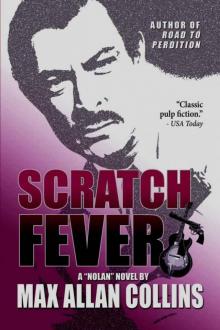 Scratch Fever
Scratch Fever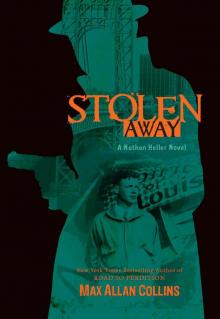 Stolen Away
Stolen Away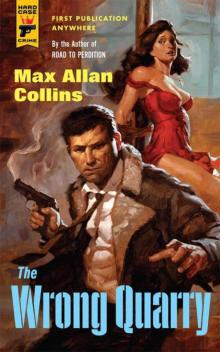 The Wrong Quarry (Hard Case Crime)
The Wrong Quarry (Hard Case Crime)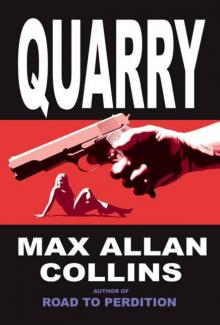 Quarry
Quarry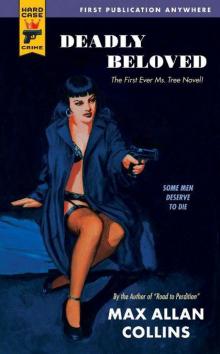 Hard Case Crime: Deadly Beloved
Hard Case Crime: Deadly Beloved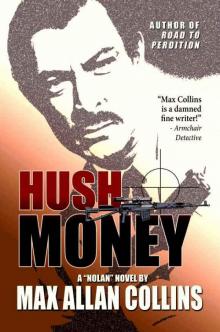 Hush Money
Hush Money The Million-Dollar Wound
The Million-Dollar Wound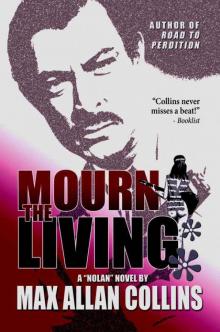 Mourn The Living
Mourn The Living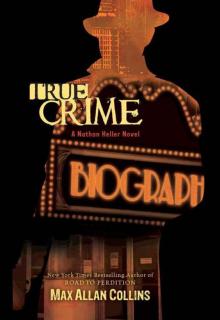 True Crime
True Crime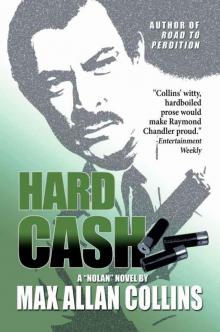 Hard Cash
Hard Cash Triple Play: A Nathan Heller Casebook
Triple Play: A Nathan Heller Casebook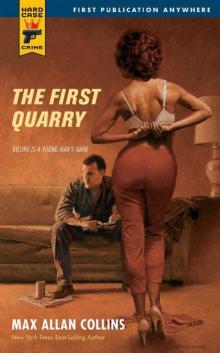 Hard Case Crime: The First Quarry
Hard Case Crime: The First Quarry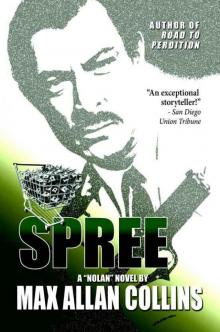 Spree
Spree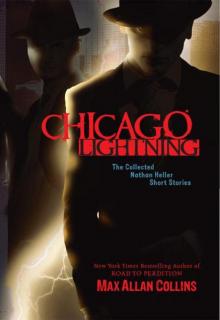 Chicago Lightning : The Collected Nathan Heller Short Stories
Chicago Lightning : The Collected Nathan Heller Short Stories Fly Paper
Fly Paper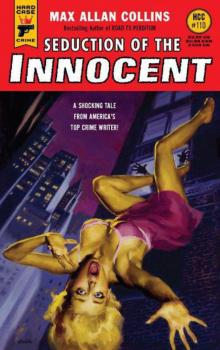 Seduction of the Innocent (Hard Case Crime)
Seduction of the Innocent (Hard Case Crime)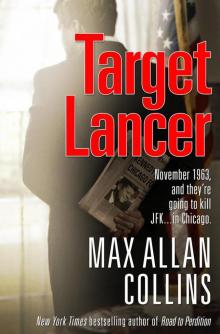 Target Lancer
Target Lancer